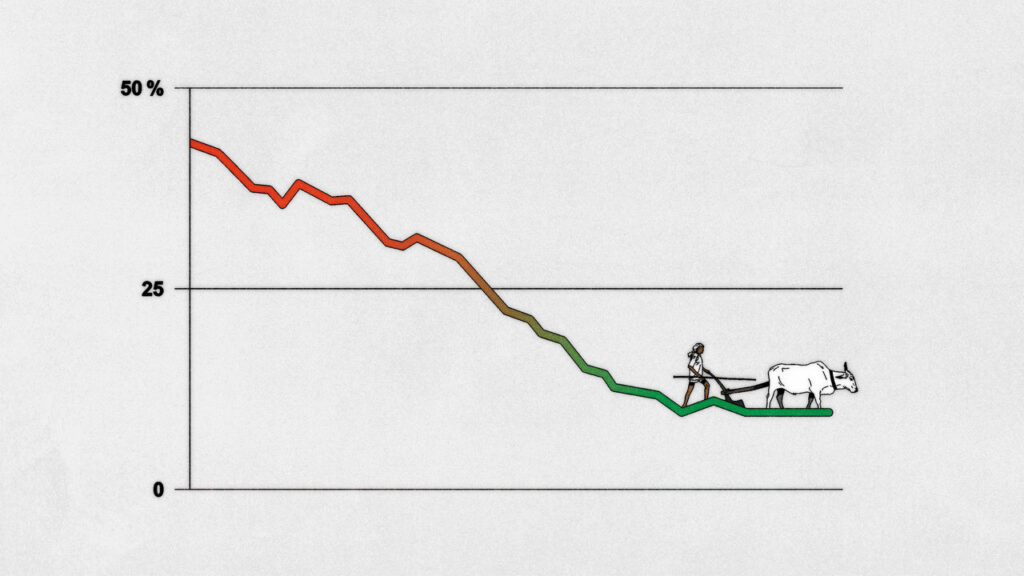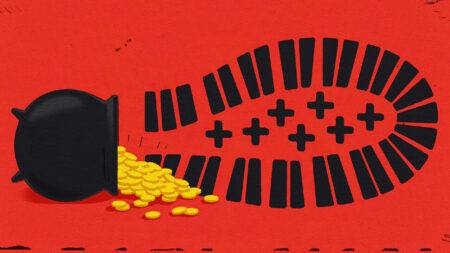Thirty years ago, Siddharth Dube, an astute writer and observer of societal dynamics, undertook a significant journey to a small, unassuming village located in northern India. This village held a poignant place in history as it was near the site of a monumental peasants’ revolt, which underscored the struggles and aspirations of the agrarian community. As Dube immersed himself in the local life, he was struck by the stark realities of poverty and deprivation that were still evident in the village.
The landscape he encountered depicted a haunting but sobering image of rural life. The village was characterized by its mud huts, which stood as a testament to the simplicity and ruggedness of existence in this part of India. Primitive ploughs lay scattered in the fields, a reminder of the antiquated farming methods that persisted despite advancements in agricultural technology elsewhere. As Dube walked through the narrow lanes, he noticed the elderly men, barefoot and weathered, moving about their daily routines. They embodied the resilience of a generation that had endured extensive hardships while also showcasing the disheartening reality of their lives.
Among those Dube interviewed was an older villager named Ram Dass, whose recollections were steeped in bitterness and nostalgia for the past. Ram Dass recounted the immense toil of his youth, a time marked by relentless labor under grueling conditions. He reminisced about working on the land owned by wealthier landlords, receiving an insignificant payment in return—just 1.5 kilograms of grains for a back-breaking day’s work. This meager reward starkly illustrated the stark inequity that existed between the landless laborers and those who owned the fertile lands.
The hardships of the villagers extended far beyond mere economic struggle. On frigid nights, when temperatures dipped painfully low, the impoverished families resorted to desperate measures for warmth. They ingeniously stuffed rice stalks into their old, tattered clothes, an improvised effort to combat the cold. Ram Dass conveyed the poignant realization that concepts which many take for granted—such as a quilt—were alien to them. The simplicity of their needs and the sheer absence of basic comforts painted a grim portrait of their lives.
As Dube continued his exploration, he unearthed more tales of resilience intertwined with despair. He discovered that many men considered themselves fortunate to possess just a single pair of shoes, gifted to them on the auspicious occasion of their wedding. This footwear was not merely a necessity but rather a symbol of pride—a limited yet significant possession that would accompany them throughout their lives until the very end. The stories shared by Ram Dass and others in the village served to highlight the prevailing social hierarchies and the stark divisions between the affluent and the marginalized.
Through these poignant observations, Siddharth Dube captured the essence of a community living in the shadow of historical oppression. The village, steeped in the legacy of the peasants’ revolt, was more than just a backdrop; it served as a living narrative of struggle, desperation, and enduring hope. The tales of the villagers like Ram Dass emphasized that while time may have passed, the echoes of their fight for dignity and survival remained palpably present. These themes—the intersections of poverty, resilience, and historical context—were the foundation of Dube’s reflections, leaving an indelible mark on readers and provoking thought about the broader implications of inequality in society.
In summary, Siddharth Dube’s journey into that Northern Indian village not only spotlighted the persistent poverty faced by its inhabitants but also unveiled their surprising resilience in the face of adversity. By documenting the lives of people like Ram Dass, Dube provided a voice for the voiceless and painted a vivid tableau of rural life that continues to resonate with those who seek to understand the complexities of social justice and economic disparities. His experiences serve as an important reminder of the ongoing struggles that many communities face, emphasizing the need for empathy and action.









